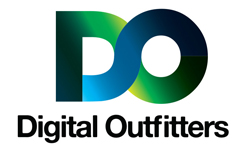Logo Design
For the past couple years, i’ve been trying to go back to my roots in graphic design – especially in the area of logo design for small businesses. I think that there are far too many bad logos out there. If you take a look around as you’re driving to work, or to get groceries – pay attention to the signs outside of businesses. Take a gander at the small pizza places, the deli’s, the laundromats. More often than not, you’ll see a lot of text-based typography, with the business name printed out in basic lettering – without any attention paid to the style or feeling that they are trying to convey to their customers.
I understand that as a culture, we are made to believe that logos and brand names cost a lot of money, but the fact is – not having a brand, not having a logo…
It’s costing you way more!
I don’t doubt that you will be frustrated when the competitor down the street opens their doors with a fancy new logo, bright – attention grabbing colors, and a remarkable sign that starts stealing your customers.
So… why don’t you become that awesome business? This whole world is full of checks and balances, and if you don’t go out and start taking some of those customers – you are basically giving them to your competition. They aren’t going to beat a path to your door without some sort of motivation. Step up, get a new style, get their attention – and start being the company you wouldn’t want to compete with!
We’ll be in touch soon. ; )
